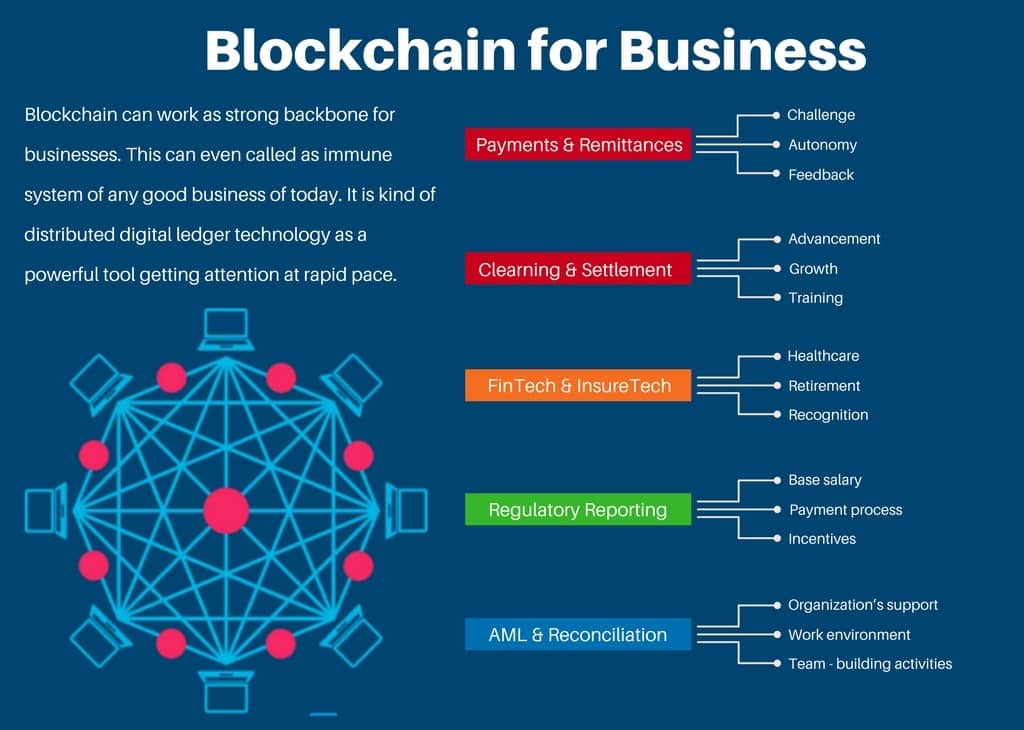Imagine your blockchain as a digital Fort Knox. It’s strong but threats loom, always. Hackers plot day and night to crack open its vaults. But just as Fort Knox guards its gold, you can seal off your blockchain. With the right know-how, methods to prevent blockchain attacks will be like armor in your arsenal. This guide will show you how. From tightening key security to shoring up your consensus protocols, you’re about to become a fortress. Get ready to monitor, protect, and outwit the slyest of cyber assailants. This isn’t a list of suggestions—it’s your battle plan for digital dominance.
Fortifying Cryptographic Key Security
Strengthening Key Management Systems
Keeping your keys safe is key in blockchain. Just like you wouldn’t leave your house keys out for anyone to grab, you need to protect your cryptographic keys with equal care. Good key management systems make sure only the right eyes see your blockchain keys. They control who gets in and out, just like a trusty security guard. Each person gets a unique key, so if one gets lost, the rest stay safe.
This kind of security prevents the bad guys from sneaking in. It’s your digital Fort Knox! Weak keys are like rusty locks; they just won’t do the job. That’s why we go for the strongest ones out there. We keep keys safe with secret codes that only the real owner knows. It’s like a secret handshake that keeps strangers out.
Enhancing Encryption Techniques
Now, let’s talk encryption – it’s what keeps your messages from turning into open postcards that anyone can read. Simple encryption might as well be a see-through lock. We need something tough! Using complex codes, nobody but you can turn the garbled mess back into the real deal.
You see, messing with these codes should be so hard, it’s like trying to count the hairs on a moving cat. It just can’t be done! By mixing up the codes often, we also make sure no sneaky peeks happen. Imagine you change the way to your secret clubhouse every day, so the nosy neighbor can’t follow you. It’s that idea, but for digital secrets.
Each person also gets a slice of the code, called multi-signature authentication. Think of having a bike with two locks. If one key is lost, the bike’s still safe. It’s better with buddies, and it’s true for keys too!
It’s not about one lock being the best, it’s about using lots of smart, strong locks together. Add in constant checks and balances, and you’ve got a fortress. We keep your blockchain safe and sound so you can sleep easy at night.
Your digital goods need hardcore protection. Like a treasure chest in the deep sea, we create mystery maps that only you can follow. This is what makes a blockchain tough to crack. It’s the right mix of wise key handling and next-level encryption that keeps your digital gold locked tight. And that, my friends, is how you keep your blockchain safer than a dragon’s den.
Solidifying Consensus Algorithm Defense
Analyzing Consensus Protocols for Exploits
Protect your blockchain like it’s a digital Fort Knox. Let’s dig into how. First up, we’re tackling consensus algorithm defenses. You’ve heard of these, right? They’re like the guards of blockchain, making sure each transaction follows the rules. But they’re not perfect. Hackers love to find holes in the system. That’s why we get our magnifying glasses out and look for those tiny cracks. We check all the ways these consensus algorithms can let us down. And when we find a gap, we patch it up fast. This means stronger guards and safer blockchains for everyone.
We do this by keeping blockchain security measures on high alert. It’s like having a world-class guard squad that’s ready every second. And we don’t stop there. We check and double-check those clever security measures. Our aim is to keep your digital gold safe. We don’t want any sneak-thieves getting in, so we make sure security is bulletproof.
Implementing Multi-Signature and Cross-Chain Safeguards
Next up, let’s talk multi-signature and cross-chain tools. Think of it like that extra lock on your door. You know, that one you use when you want zero unwelcome guests? Well, that’s what multi-signature is for blockchain. It means you need more than one key to say “yes” to a transaction. It’s a buddy system that makes your blockchain tough to crack.
Multi-signature authentication isn’t just smart; it’s a fortress wall in digital form. By requiring a team of keys, you spread out risk. Plus, it’s not just one door we’re guarding. In the world of blockchains, we have cross-chain security. It links different chains, making sure they can talk to each other without spilling secrets. We build bridges but also put up gates on those bridges. Cross-chain enhancements are like checkpoints, keeping your transactions safe as they travel.
Both multi-signature and cross-chain methods cut the number of weaknesses. This is key in making sure your blockchain is top-notch secure. Without these, you’re just asking for trouble. They don’t just add security; they weave it into the very fabric of your blockchain. With these in place, your blockchain isn’t just a safe—it’s safe times ten.
Implementing these safety nets takes smarts. It takes experts who eat, sleep, and breathe blockchain protection. That’s us. We’re the ones who stand guard while your blockchain does its thing. We make it our mission to keep those digital jewels locked down tight.
So remember: your blockchain is like your castle. And every castle needs its defenses. With solid consensus algorithms and savvy multi-signature checks, you’re not just building walls, you’re creating a fortress. A digital fortress that’s ready for whatever comes its way.
Advanced Blockchain Monitoring and Node Protection
Utilizing Real-Time Blockchain Monitoring Tools
Keeping your blockchain safe is like being a superhero for your digital coins. You’re the watchful eye, guarding them night and day. Imagine a tool that tells you the moment bad guys try to sneak in. That’s a real-time blockchain monitoring tool for you! It’s like having a high-tech alarm system for your digital home.
Establishing Node Security Best Practices
Securing nodes is a big deal in the blockchain world. Think of nodes like doors to a bank vault. You wouldn’t want just one lock on them, right? Well, nodes work the same way. Here’s how we keep those bad actors out:
- Keep Software Updated: Just like you keep your phone’s apps fresh, keep your node software in top shape.
- Go for Strong Passwords: Make sure your passwords are like puzzles – tough to guess!
- Control Access: Don’t let just anyone mess with your node. Think of it like your personal diary.
- Use Firewalls: Firewalls are like invisible shields for your node. They keep the creeps out!
Remember, your node is the door to your vault. Keep it under lock and watch, and you’re golden!
Mitigating Advanced Blockchain Attacks
Prevention of Sybil and 51% Attacks
Blockchain security needs strong walls. Think of it like a digital Fort Knox. To stop Sybil attacks, we use clever tricks. Sybil attacks are bad guys creating fake identities. We spot and block them. It’s like playing a game of Whack-A-Mole, but we’re always ahead.
For a blockchain, a 51% attack is when one person gets control of over half the mining power. We stop this by spreading work out more. It’s like making sure no single player can win the game just because they bought the most pieces.
Hash rate is power in blockchain. More hash rate means better security. We aim to max this out. It’s a bit like making sure your fort has the most guards. This can help keep our blockchain safe from 51% attacks. More guards, less chance of trouble.
Smart Contract Auditing and Vulnerability Assessments
Smart contracts must be tight. No leaks, no weak spots. We check them a lot. Think of a smart contract as a safety box. We want it bolted down and locked tight.
Vulnerability checks spot the sneaky holes. We find and fix them fast. Picture your contract as a boat. A hole can sink it. We make sure the boat stays strong and sealed.
We use blockchain safety nets. These help catch bad code before it hurts us. Imagine a trapeze artist. Without a net, a fall can be bad. Our safety net keeps our blockchain flying high, safe from harm.
Consensus algorithms are big deals too. They’re like the rules of the game. We protect them to keep playing fair. Sometimes it’s about changing the rules a bit so everyone plays nice. Other times, we just watch the game close to see any cheaters.
Keeping a close eye on our blockchain with tools is also key. Think of it as having cameras on the fort’s walls. We see threats before they can even touch our gold. We don’t let any bad guys sneak in when we’re looking out for you.
And, friends, don’t forget cold storage. It’s a safe for your digital gold coins. You wouldn’t leave real gold lying around. So put those digital coins away safe, where hackers can’t reach. It’s simple, like locking up your bike at school.
We get that not all attacks can be stopped. But by using these tricks, we fight back hard. Being a Blockchain Security Analyst means always googling for the latest, meanest threats. Then, whipping up even smarter moves to keep our blockchain Fort Knox safe as houses.
In this post, we explored ways to lock down blockchain security. We kicked off by beefing up key security and better encryption. Then, we dived into keeping consensus algorithms tough against hacks. Real-time monitoring and smart node defense were up next. And, we wrapped by tackling serious blockchain attacks like Sybil and 51% dangers.
I’ve shared my top advice on making your blockchain sturdy. By following these steps, you can guard your blockchain from major threats out there. Stay sharp and keep your blockchain defense strong!
Q&A :
What are the best practices for securing blockchain technology against cyber attacks?
To secure blockchain systems, it is essential to implement solid encryption practices, such as the use of cryptographic hashes and public-key cryptography. Regularly updating and patching the blockchain software can also help prevent attacks by closing any security vulnerabilities. Additionally, using multi-signature transactions can enhance the security by requiring multiple parties to authorize a transaction. Network monitoring and anomaly detection are crucial for spotting potential threats early. Engaging in regular security audits and promoting a strong security culture among users are also effective strategies to prevent blockchain attacks.
How can organizations minimize the risk of 51% attacks on blockchains?
Preventing a 51% attack involves taking measures to ensure a decentralized and diverse miner base, which makes it more difficult for a single entity to control the majority of the mining power. Use of proof-of-stake (PoS) or other consensus mechanisms that do not solely rely on mining power can also reduce the likelihood of such attacks. Increasing the number of confirmations required for a transaction can provide additional security against a 51% attack, as it would require much more effort to alter confirmed transactions.
Are there any emerging technologies that enhance blockchain security?
Emerging technologies like quantum-resistant cryptography aim to guard against potential future attacks from quantum computers. Zero-knowledge proofs provide another layer of security by enabling transaction validation without revealing sensitive information. Additionally, technologies such as sharding, where the blockchain network is split into smaller, more manageable pieces (or shards), can improve the overall security and performance of blockchain systems. Implementing secure smart contract platforms to avoid vulnerabilities and prevent unauthorized access is yet another way technology is enhancing blockchain security.
What role does network monitoring play in detecting potential blockchain threats?
Network monitoring is critical in blockchain security as it helps administrators to detect unusual patterns of behavior that may indicate a potential threat, such as a spike in transaction volumes or changes in mining activity. By keeping a vigilant eye on network traffic and applying anomaly detection algorithms, organizations can quickly respond to unauthorized access or possible breaches. Continuous monitoring ensures that security teams can react in real-time to mitigate the impact of any attack on the blockchain.
Can regular security audits help in preventing blockchain intrusions or manipulations?
Yes, conducting regular security audits is one of the most effective ways to identify and address vulnerabilities within a blockchain network. Audits can involve code reviews of smart contracts, assessment of the network’s infrastructure, and evaluation of the overall blockchain architecture to ensure compliance with best security practices. Regular security audits help in maintaining the integrity of the network, catching any potential flaws before they can be exploited by attackers.




RELATED POSTS
Public Key vs Private Key Cryptography: Unlocking the Secrets of Digital Security
Understanding the Basics of Public...
Tellor (TRB Crypto): A secure oracle solution for DeFi
In the blockchain world, accessing...
Decentralized Learning Platforms: Revolutionizing Education with Blockchain Tech
Discover how decentralized learning platforms...
Phishing Attacks in Blockchain: How to Shield Your Digital Assets
Protect your blockchain assets from...
Blockchain for Beginners: Unlocking the Mysteries of Decentralized Tech
Unlock the Basics of Blockchain...
Consensus Algorithms Unveiled: Securing the Digital Frontier
Understanding Consensus Algorithms in Blockchain...
Decentralized Learning Unchained: Navigating the Blockchain Education Revolution
"How do decentralized learning platforms...
4 Reasons You Should Pay Attention to Banana Zone Crypto Today
Banana Zone Crypto is gaining...
What Are Crypto Derivatives? Mystery of Digital Trading Instruments
Demystifying Crypto Derivatives: Understanding Basics,...
Infrared Finance: Leading PoL Staking on Berachain
Infrared Finance has emerged as...
Identity Management and Compliance Solutions: Navigating the Maze of Modern Security
Identity management and compliance solutions...
What is Proof of Elapsed Time in Blockchain? Unveiling the Mystery Behind Efficient Consensus
What is Proof of Elapsed...
Impact of Regulations: Elevating or Encumbering Security Standards?
The Impact of Regulations on...
Future of Blockchain Technology: Decoding Tomorrow’s Digital Frontier
Explore the Future of Blockchain...
Purple Bitcoin: A new currency in the digital world
Purple Bitcoin is a unique...
GMCoin Airdrop: A great opportunity to earn free GMC Tokens
The GMCoin Airdrop offers a...